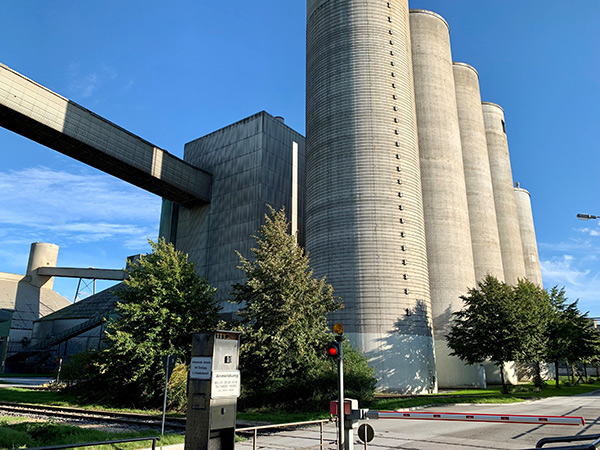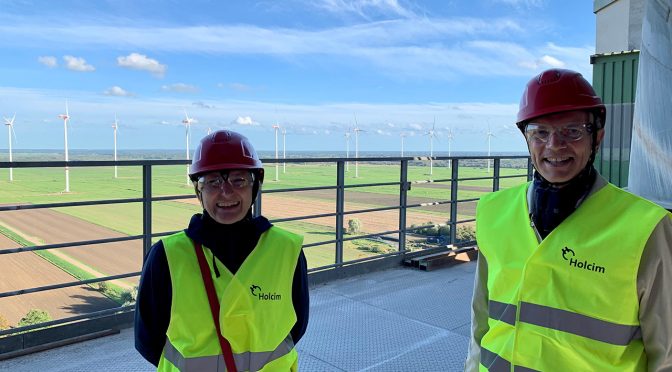On 4 October WindEurope CEO Giles Dickson visited Holcim’s Lägerdorf plant in Germany, together with Claudia Grotz of Siemens Gamesa and Chair of WindEurope’s Sustainability Working Group. They met the Geocycle team who are using wind turbines blade waste to generate heat and ash to help make cement. It’s currently the only such cement plant in Europe that’s using blade waste.
At the end of their normal operational lives (20-25 years) onshore wind turbines can be upgraded with new components (lifetime extension). Or they are replaced with newer models (repowering) or the wind farm is fully decommissioned. In the last two cases the turbine components are dismantled and need to be disposed of. Around 85% to 90% of the dismantled components are recyclable. Most components – the foundation, tower and components in the nacelle – have established recycling practices.
However, wind turbine blades are more challenging to recycle due to the composite materials used in their production. Composite materials are a combination of reinforcement fibres (usually glass or carbon) and a polymer matrix. Composites are also used in the transport, aeronautics, construction and building industries. The wind industry is working with the chemicals and composites industries to develop technologies to recycle blade waste, but it’ll be 2030 before they’re fully deployable at scale.

In the short and medium term we need other solutions. We don’t want landfill – we’ve called on governments in Europe to ban it by 2025. A key alternative is the recovery of blade waste: burning it to generate thermal heat for industrial processes. And the cement industry is taking a lead here.
Recovery means removing all individual components of a turbine that can be used again and turning the remaining waste into a fuel or thermal energy. The waste management company Geocycle is pioneering this recovery technology through cement co-processing at the Holcim Lägerdorf plant in Northern Germany. The organic content of blade waste is recovered as thermal energy while the mineral fraction of the waste is integrated as ash in the matrix of the cement clinker the plant produces. This reduces the carbon footprint of cement production and makes it more resource efficient. This is because the blade waste substitutes (partially) for fossil fuels in the incineration process and for other materials in the clinker production process. One tonne of blade waste reduces CO2 emissions by 110 kg and saves 461 kg of raw materials.
At the moment Holcim’s plant in Lägerdorf is the only cement plant in Europe performing this recovery of blade waste. We will need more. As more and more wind farms from the early days of wind energy reach the end of their operational lifetime, the volume of decommissioned blades will increase. By 2025 we expect to have at least 25,000 tonnes of new blade waste every year. And we expect this to double by 2030.
To learn more about wind turbine sustainability, visit the website of ETIPWind, the European Technology & Innovation Platform on wind energy.
On 4-5 November WindEurope is organising the End-of-Life Issues & Strategies Seminar 2021 (EoLIS) in Brussels, a yearly event dedicated to what happens when wind farms reach the end of their operational lives. Join us and many experts for an update about evolving regulation, the industry’s call for a ban on landfilling of blade waste, existing and upcoming recycling solutions and how to build a circular supply chain.


